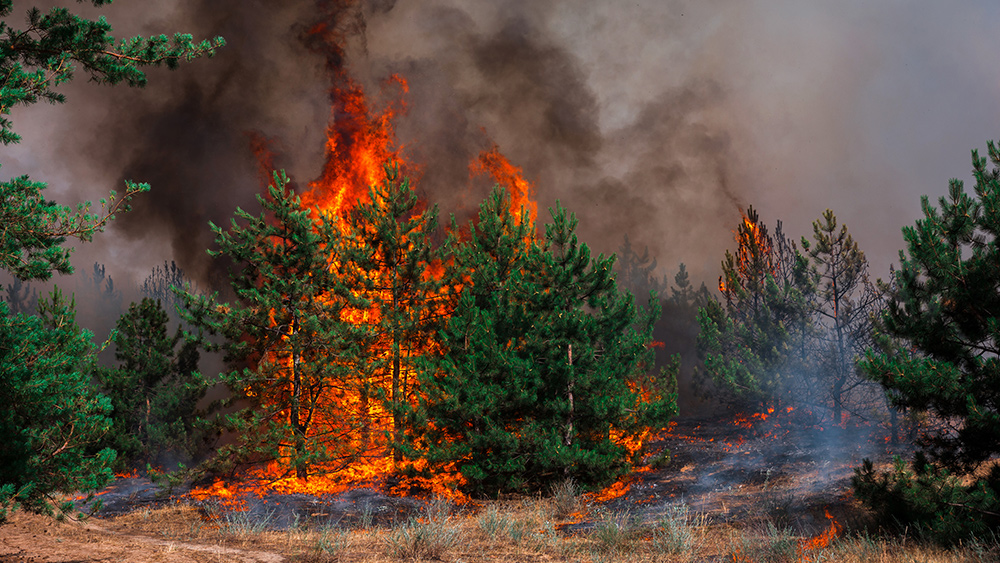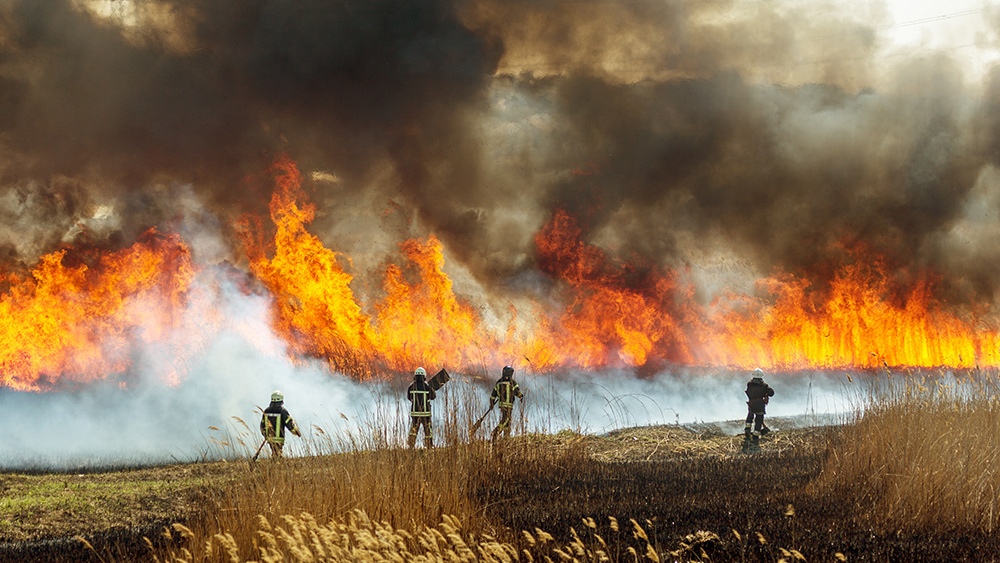Tsunami preparedness: Tips on how to survive monster waves
08/22/2023 / By Olivia Cook

Preparation is key for communities that live in high-risk coastal regions. It’s best to always be aware of your surroundings if you live on the coast, especially in a tsunami hazard zone.
Here is a list of things you need to do to survive a tsunami.
Watch the ocean for warning signs
There are natural warnings the ocean gives before a tsunami.
Unusual ocean sounds. Listen for a loud roaring sound made by the ocean. People frequently describe a deafening roar, comparable to that of a train or airplane or rushing water, before the arrival of a tsunami.
Sea-level withdrawal. A tsunami sucks coastal water seawards so watch out for the water receding abnormally far from the shoreline, exposing the ocean floor. This strange water behavior could indicate that a tsunami wave is gaining strength offshore. Or, the ocean suddenly rises and a wall of abnormally high water levels pushes onto the shore.
Earthquakes. These things normally happen after a strong earthquake, but you might not necessarily feel it if the epicenter is far out at sea – hundreds of miles away from where people can feel it.
If you happen to be surfing near the shore and you see any of these signs, paddle to shore as fast as you can and start evacuating. If you’re surfing in deep water, paddle farther out to sea as far as you can.
Listen to emergency alerts and information
Sign up for your community’s warning systems.
Listen to local radio and watch the local news to find out if there is any risk of a tsunami after an earthquake. If you’re not sure about local emergency alert systems, call the non-emergency phone line for the local police or call your local government’s office and ask about them.
Always follow instructions from local emergency managers in the event of a tsunami. They are your best bet for safety. Local emergency announcements also let you know when it’s safe to return home after a tsunami. (Related: Surviving natural disasters: How to prepare for 5 extreme weather events.)
Evacuate on foot if possible
If everyone jumps in their car at the same time, it’ll just cause major traffic and no one will get out to safety.
Bridges and roads might be damaged or blocked after an earthquake so stay away from them or buildings that could collapse.
Try to walk on open ground as much as possible to stay extra safe. Walk or run toward safety to avoid getting stuck in a car in a dangerous location.
Follow community evacuation plans and tsunami evacuation route signage
Know and practice community evacuation plans. Some at-risk communities have maps with evacuation zones and routes. Map out your routes from home, work and play. Pick shelters 100 feet or more above sea level, or at least one mile inland.
Tsunami hazard zones usually have signs to direct you to safety. Keep an eye out for white and blue signs that say “tsunami evacuation route” or something similar. Use them to guide you inland and out of the hazard zone to safety.
There are often arrows posted with these signs to show you which way to go. If not, just move from sign to sign until you see one that says you’re out of the tsunami evacuation zone.
Get to high ground as fast as you can
High ground is the safest place to be during a tsunami. If there is an earthquake and you live in a tsunami hazard zone, don’t wait for an official tsunami warning. As soon as the shaking stops and it’s safe to move, go to the nearest high ground as quickly as possible to get out of danger.
If you don’t live in a tsunami hazard zone, you don’t need to evacuate to high ground after an earthquake. Stay put unless there are any instructions from emergency services to leave the area.
Climb to the top of a building
If you don’t have time to evacuate and get to high ground, go up to a third floor or higher in a sturdy building. Even better, try to get on the roof of the tallest, sturdiest building you can find.
If you’re right on the coast, there might be a tall tsunami evacuation tower nearby. Climb a tall, sturdy tree as a last resort.
Go as far inland as possible
The farther away from the shore you are, the less danger you’re in. Choose a piece of high ground that’s as far inland from the shore as you can get. If there is no high ground, just get as far inland as you can.
Tsunamis can travel as far as 10 miles inland in some cases. However, the shape and slope of the shoreline affect how far they can reach.
Grab something floating if you’re in the water
If you get caught by a tsunami’s waves, look for something sturdy that floats, such as a tree trunk, and hold on to it tightly while you get carried by the waves.
Though it may be difficult at the moment, try your best not to swallow water. Tsunamis can pick up chemicals and waste that can be harmful to your health.
Go out to sea if you’re in a boat
Going farther away from land is safer if you’re on the water in a tsunami. Steer your boat toward the open sea, facing the waves, and get as far out as you can. Never return to port if a tsunami warning is issued in the area. Tsunami activity causes dangerous currents and water levels near the shoreline, which can capsize your boat.
If you’re already docked in a harbor, get out of your boat and go inland to safety as quickly as possible.
Stay in your “safe spot” for at least eight hours
Tsunami activity can continue for up to eight hours or longer. Stay away from the coast and on high ground for this period to play it safe. Listen to announcements from officials and only move when they say it’s safe to do so.
You may be stressed out and worried about your loved ones, but you must stay where you are and try to remain calm.
Having a well-prepared evacuation tactic, including a communication mechanism in place that’s well-understood and practiced by your family, can make a difference between life and death.
Avoid downed power lines
Damaged power lines can electrically charge the water, so keep an eye out for downed power lines or any other damaged electrical equipment when you’re walking home or to a shelter after a tsunami is over.
Don’t wade through any water that they’re touching to be extra careful. Examples of electrical equipment to avoid are electrical boxes and telephone poles.
Read more survival tips at Survival.news.
Watch this video to learn about the tsunami survival kit.
This video is from The Urban Prepper channel on Brighteon.com.
More related stories:
Survival skills: How to predict the weather without any instruments.
Controlling the weather has been possible since at least 1916, evidence shows.
Sources include:
Submit a correction >>
Tagged Under:
bug out, chaos, Collapse, emergency alerts, evacuation center, natural disasters, off grid, panic, power lines, preparedness, prepper, prepping, SHTF, survival, Survival Tips, survivalist, tips, tsunami, warning systems
This article may contain statements that reflect the opinion of the author
Get independent news alerts on natural cures, food lab tests, cannabis medicine, science, robotics, drones, privacy and more from NewsTarget.com
Get independent news alerts on natural cures, food lab tests, cannabis medicine, science, robotics, drones, privacy and more from NewsTarget.com
RECENT NEWS & ARTICLES
SHTF.News is a fact-based public education website published by SHTF News Features, LLC.
All content copyright © 2018 by SHTF News Features, LLC.
Contact Us with Tips or Corrections
All trademarks, registered trademarks and servicemarks mentioned on this site are the property of their respective owners.




















